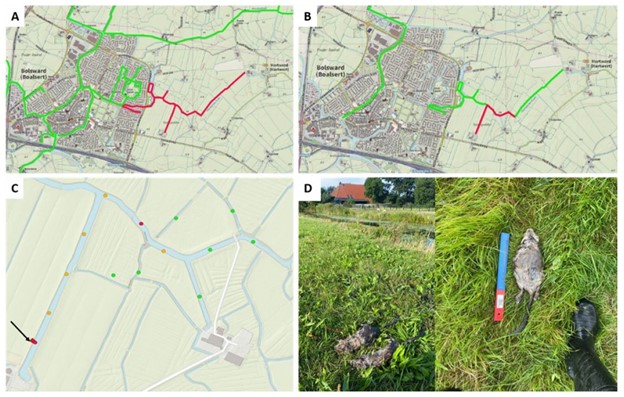In August/September 2021, 3 muskrats were caught in Friesland thanks to eDNA. It concerned an area with a low muskrat population.
Tracking down muskrats and coypu can be made easier by detecting the DNA they leave behind in the water. This DNA is called environmental DNA (eDNA) and comes from, for example, intestinal cells in faeces.
Sampling
In this case, a 5 km section between the towns of Bolsward and Hartwerd turned out to be positive. Subsequently, 1 km sections were sampled, of which 1 was positive for muskrat eDNA. Afterwards point samples were taken.
Feed traces
During point sampling, the muskrat trappers found some questionable feed traces. These did not directly indicate a muskrat, but could also have come from a water vole. Thanks to the eDNA the muskrat trappers knew that muskrats had been present, so they so they carefully scanned the water’s edge. There was indeed a muskrat burrow. This is how the first muskrats of 2021 were trapped in this area.

Caught muskrats between Bolsward and Hartwerd
A. In red, positive 5 km route;
B. In red, positive 1 km localization section;
C. Localization point samples. Red: highest positive concentration, orange: moderate positive, green: negative. Arrow: location of the trapped muskrats. At the second red dot at the top, the water was too deep;
D. The trapped muskrats.
